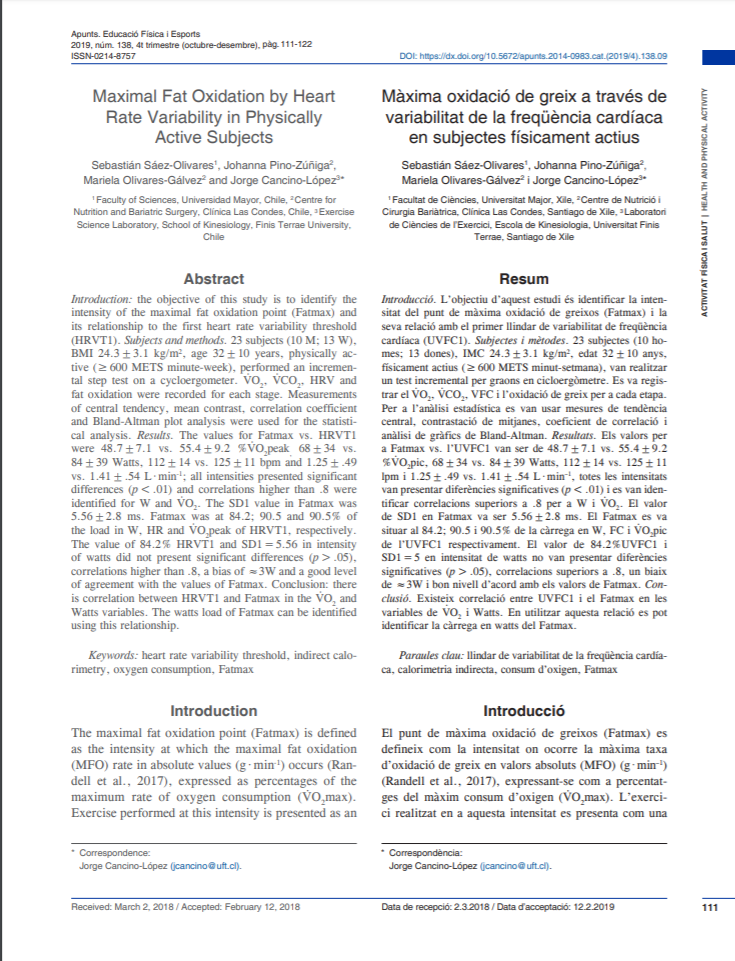Maximal Fat Oxidation by Hear Rate Variability in Physically Active Subjects

Fecha
2019Autor
Sáez-Olivares, Sebastián [Univ Mayor, Fac Sci]
Pino-Zuniga, Johanna
Olivares-Galvez, Mariela
Cancino-López, Jorge
Ubicación geográfica
Notas
HERRAMIENTAS
Acceda a títulos restringidos
¿Cómo descargar?Resumen
Introduction: the objective of this study is to identify the intensity of the maximal fat oxidation point (Fatmax) and its relationship to the first heart rate variability threshold (HRVT1). Subjects and methods. 23 subjects (10 M; 13 W), BMI 24.3 +/- 3.1 kg/m(2), age 32 +/- 10 years, physically active (>= 600 METS minute-week), performed an incremental step test on a cycloergometer. (V) over dotO(2), (V) over dotCO(2), HRV and fat oxidation were recorded for each stage. Measurements of central tendency, mean contrast, correlation coefficient and Bland-Altman plot analysis were used for the statistical analysis. Results. The values for Fatmax vs. HRVT1 were 48.7 +/- 7.1 vs. 55.4 +/- 9.2 %(V) over dotO(2)peak 68 +/- 34 vs. 84 +/- 39 Watts, 112 +/- 14 vs. 125 +/- 11 bpm and 1.25 +/- .49 vs. 1.41 +/- .54 L.min(-1); all intensities presented significant differences (p < .01) and correlations higher than .8 were identified for W and (V) over dotO(2). The SD1 value in Fatmax was 5.56 +/- 2.8 ms. Fatmax was at 84.2; 90.5 and 90.5% of the load in W, HR and (V) over dotO(2)peak of HRVT1, respectively. The value of 84.2% HRVT1 and SD1 = 5.56 in intensity of watts did not present significant differences (p > .05), correlations higher than .8, a bias of approximate to 3W and a good level of agreement with the values of Fatmax. Conclusion: there is correlation between HRVT1 and Faunas in the VO2 and Watts variables. The watts load of Fatmax can be identified using this relationship.
URI
https://doi.org/10.5672/apunts.2014-0983.es.(2019/4).138.09http://repositorio.umayor.cl/xmlui/handle/sibum/6569
Coleccion/es a la/s que pertenece:
Si usted es autor(a) de este documento y NO desea que su publicación tenga acceso público en este repositorio, por favor complete el formulario aquí.